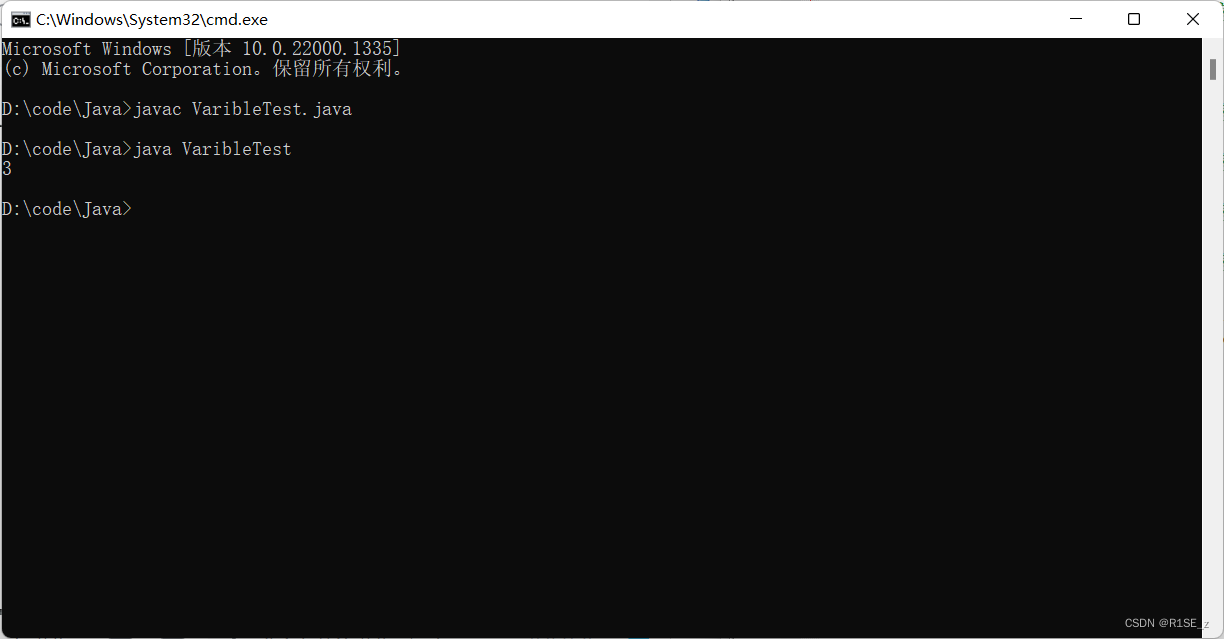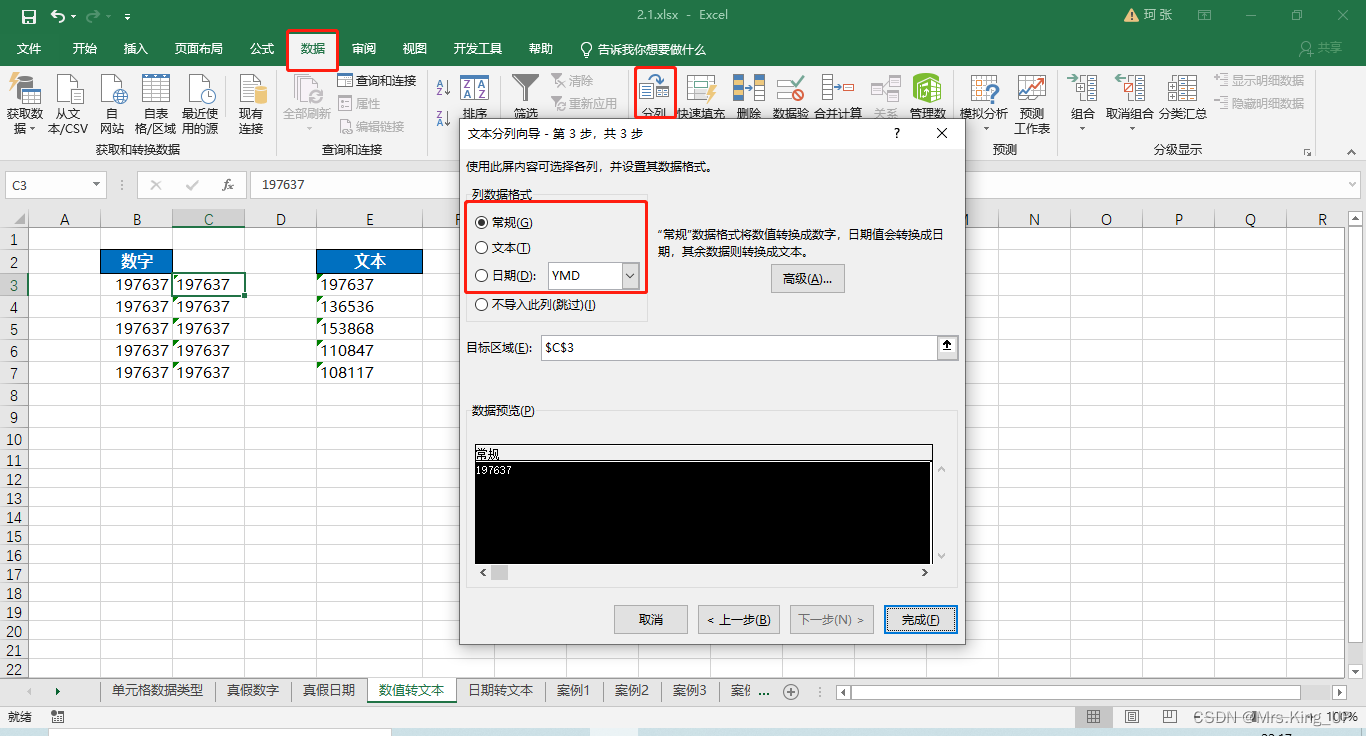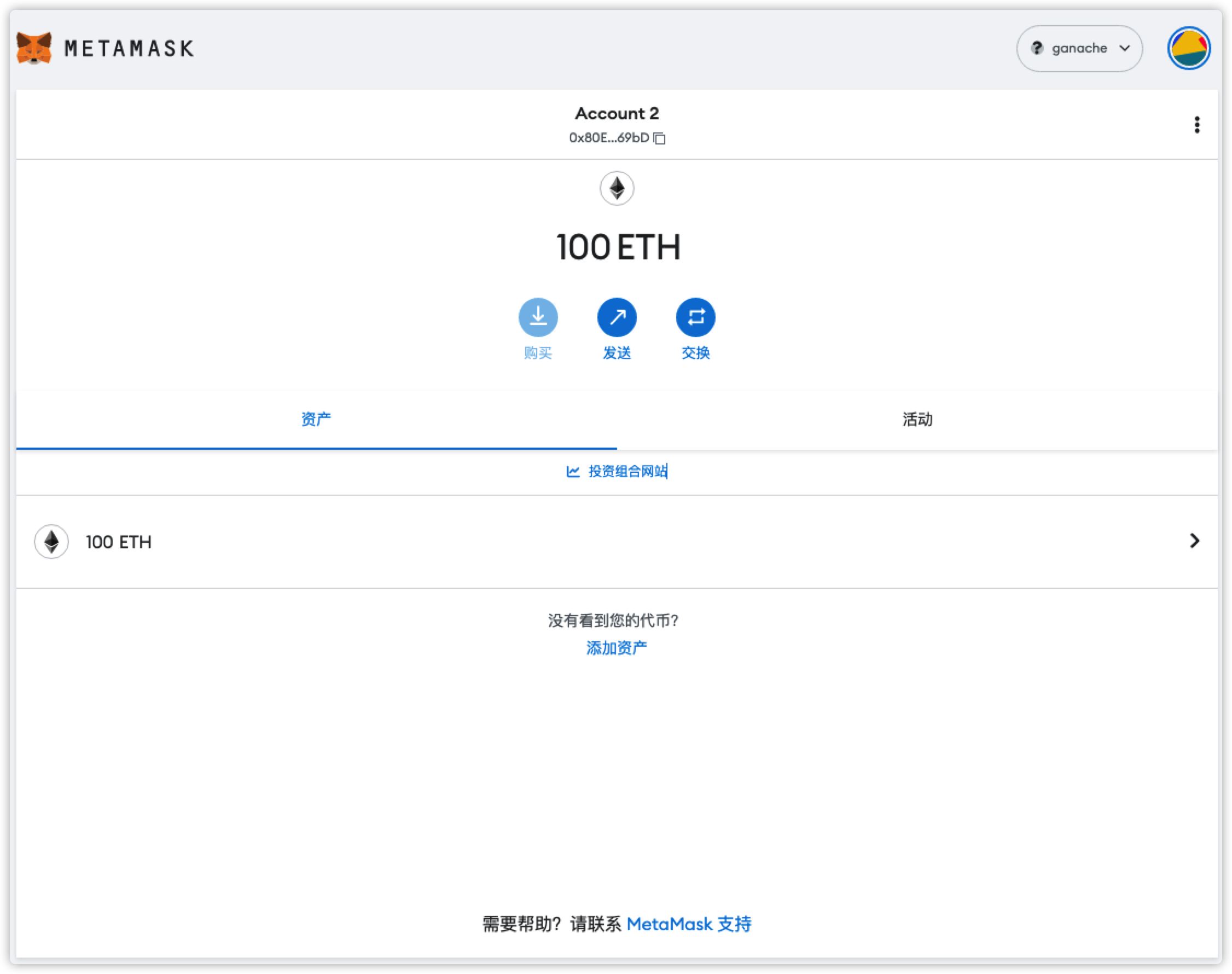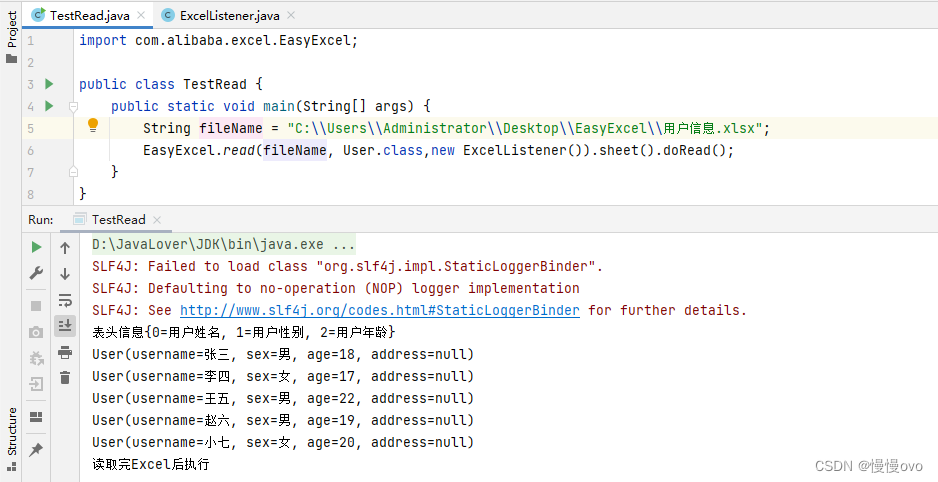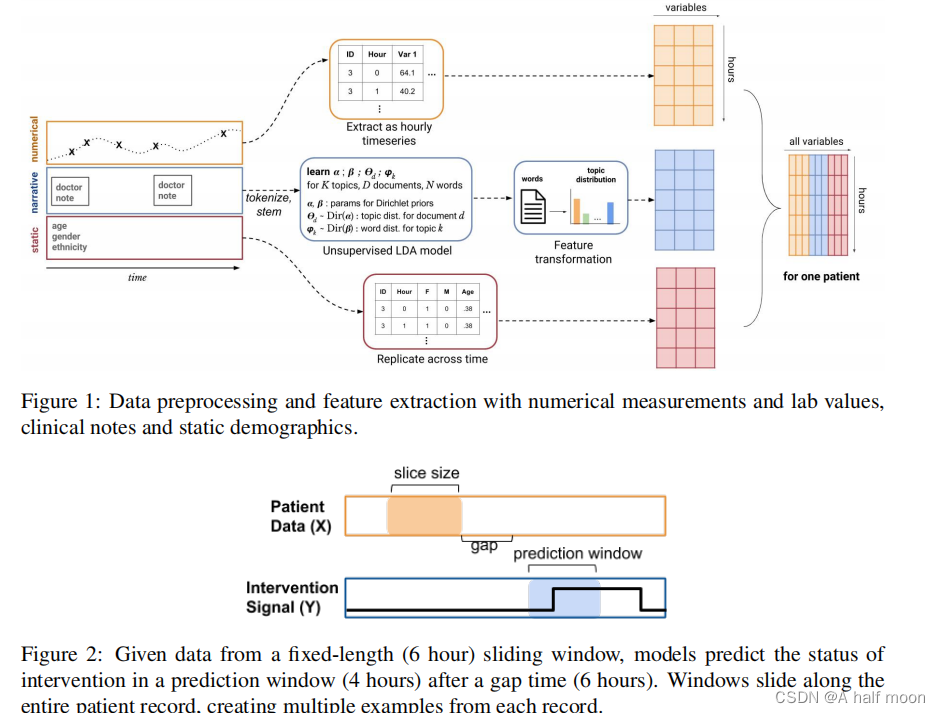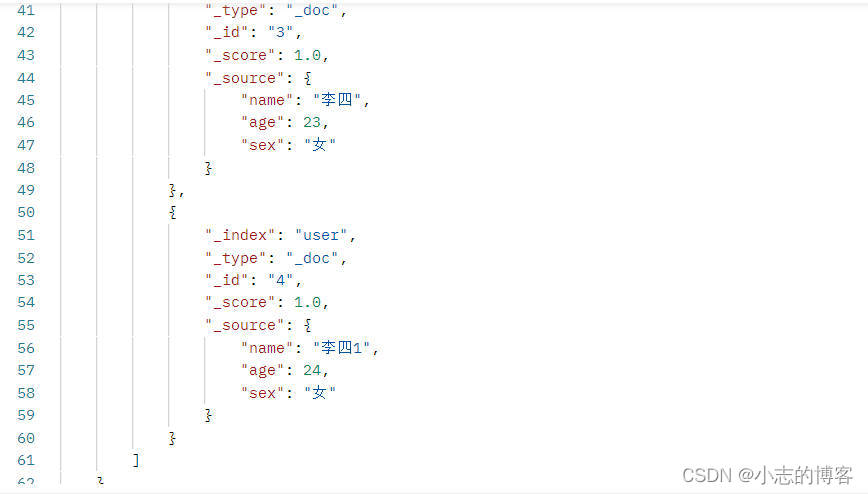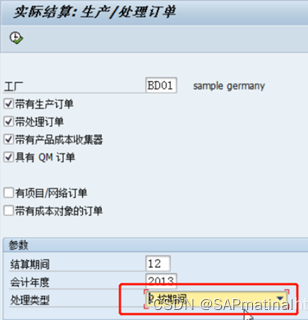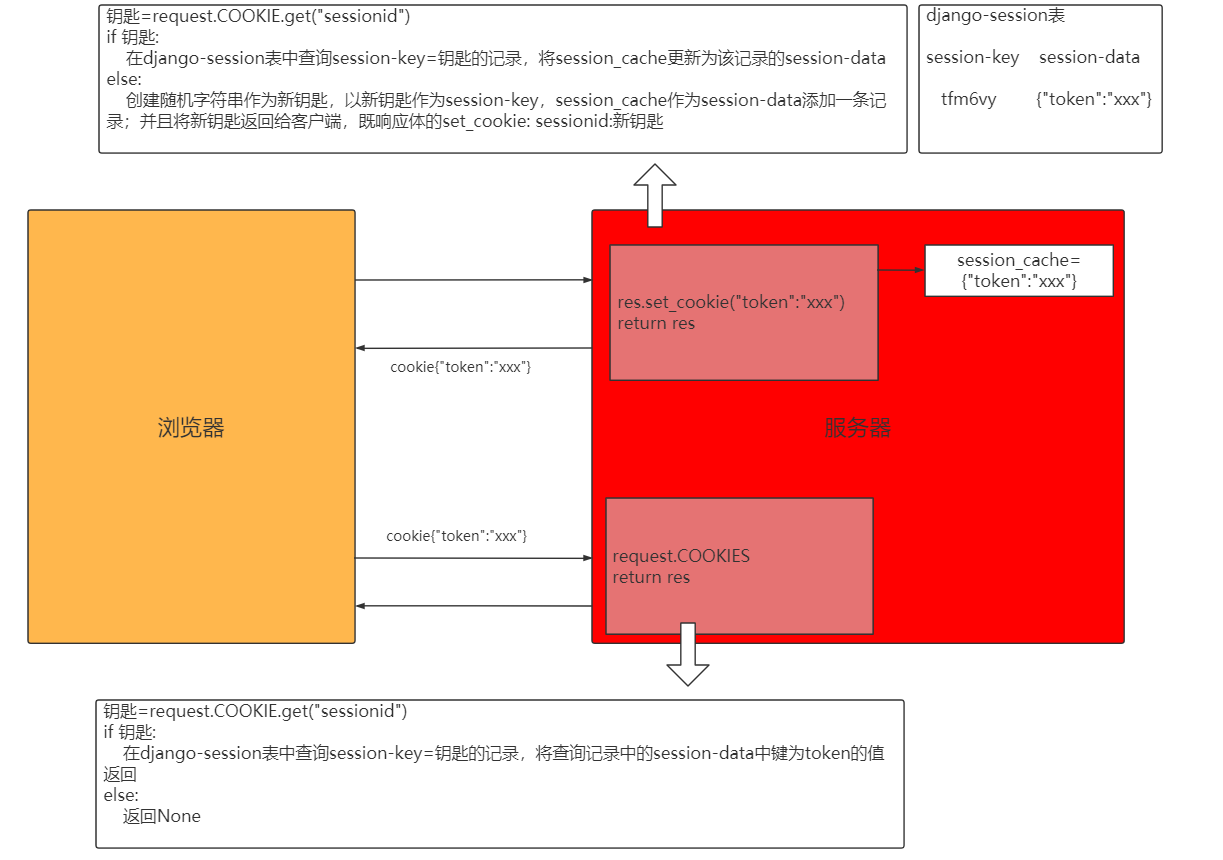2023.1.18
经过学习了计算图、链式法则、加法层、乘法层、激活函数层、Affine层、Softmax层的反向传播的实现。今天来学习反向传播法的算法实现,做一次总结;
实现的思路(“学习”的步骤):
一,前提
神经网络的“学习”是,在存在合适的权重和偏置下,对其调整以拟合训练数据的过程;
步骤1: 我们从训练数据中随机选取一部分数据(mini-batch),目的是减小其损失函数的值;
步骤2: 为了完成步骤1,需要求出各个权重参数的梯度,寻找mini-batch的损失函数的值减少最多的方向;
步骤3: 进行权重参数沿梯度的微小更新;
步骤4: 重复步骤1,2,3;
我们在步骤2上会用到误差传播法,高效计算梯度,观察代码:
这里只有了两层神经网络去是实现他:来观察神经网络的结构
class TwoLayerNet:
def __init__(self, input, hidden, output, weight__init__std=0.01):
# 权重的初始化 假设一个权重
self.params = {}
self.params['w1'] = weight__init__std * np.random.randn(input, hidden)
self.params['b1'] = np.zeros(hidden)
self.params['w2'] = weight__init__std * np.random.randn(hidden, output)
self.params['b2'] = np.zeros(output)
# 生成层
self.layers = OrderedDict()
self.layers['Affine1'] = Affine(self.params['w1'], self.params['b1'])
self.layers['ReLU1'] = ReLU()
self.layers['Affine2'] = Affine(self.params['w2'], self.params['b2'])
self.lastlayer = SoftmaxWithLoss()
def predict(self, x):
for layer in self.layers.values():
x = layer.forward(x)
return x
def loss(self, x, t): # x:测试数据;t:监督数据
y = self.predict(x)
return self.lastlayer.forward(y, t)
def accuracy(self, x, t):
y = self.predict(x)
y = np.argmax(y, axis=1) # 正确解标签
if t.ndim != 1:
t = np.argmax(t, axis=1)
accuracy = np.sum(y == t) / float(x.shape[0])
return accuracy
def numerical_grandient(self, x, t): # x:测试数据;t:监督数据
loss_w = lambda w: self.loss(x, t)
grads = {}
grads['w1'] = numerical_gradient(loss_w, self.params['w1'])
grads['b1'] = numerical_gradient(loss_w, self.params['b1'])
grads['w2'] = numerical_gradient(loss_w, self.params['w2'])
grads['b2'] = numerical_gradient(loss_w, self.params['b2'])
return grads
def gradient(self, x, t):
# forward
self.loss(x, t)
# backward
dout = 1
dout = self.lastlayer.backward(dout)
layers = list(self.layers.values())
layers.reverse()
# reserved() 是 Python 内置函数之一,其功能是对于给定的序列(包括列表、元组、字符串以及 range(n) 区间),该函数可以返回一个逆序序列的迭代器(用于遍历该逆序序列)
for layer in layers:
dout = layer.backward(dout)
# setting
grads = {}
grads['w1'] = self.layers['Affine1'].dw
grads['b1'] = self.layers['Affine1'].db
grads['w2'] = self.layers['Affine2'].dw
grads['b2'] = self.layers['Affine2'].db
return grads
OrderDict是有序字典:
记住向字典里添加元素的顺序,逆序输出;
Reserved函数:
# reserved() 是 Python 内置函数之一,其功能是对于给定的序列(包括列表、元组、字符串以及 range(n) 区间),该函数可以返回一个逆序序列的迭代器(用于遍历该逆序序列);
梯度确认利用数值微分和误差反向传播法的差分:
数值微分的特点是简单、速度慢、不易出错;误差反向传播法的特点是复杂、速度快,容易出错。所以我们来进行梯度确认,观察输出结果是否一致;
# 读入数据和梯度确认
x_batch = x_train[:3] # 3 张图片 (3个数字) 因为数值微分运行很慢,取3个结果观察
t_batch = t_train[:3]
grad_numberical = networks.numerical_grandient(x_batch, t_batch) # 数值微分法
grad_backprop = networks.gradient(x_batch, t_batch) # 误差反向传播法
# 求各个权重的绝对平均值
print("gradient recognition:", '\n')
for key in grad_numberical.keys():
diff = np.average(np.abs(grad_backprop[key] - grad_numberical[key]))
print(key + ":" + str(diff), file=outputfile)
# 输出结果:
# w1:0.0008062789370314258
# b1:0.007470903158435932
# w2:0.007911547556927193
# b2:0.4162550575209752
记录保存功能:
运行的结果非常多,为了更好的改进神经网络模型,对运行记录保存很有必要;
# 输出结果保存 def Result_save(name): path = "C:\\Users\\zzh\\Deshtop\\" # 自己根据需要设置保存路径 full_path = path + name + '.txt' # 也可以创建一个.doc的word文档 file = open(full_path, 'w') return file..............................................
...........代码运行部分.............
..............................................
outputfile.close()
这里我们将运行结果保存到了txt的文件中:
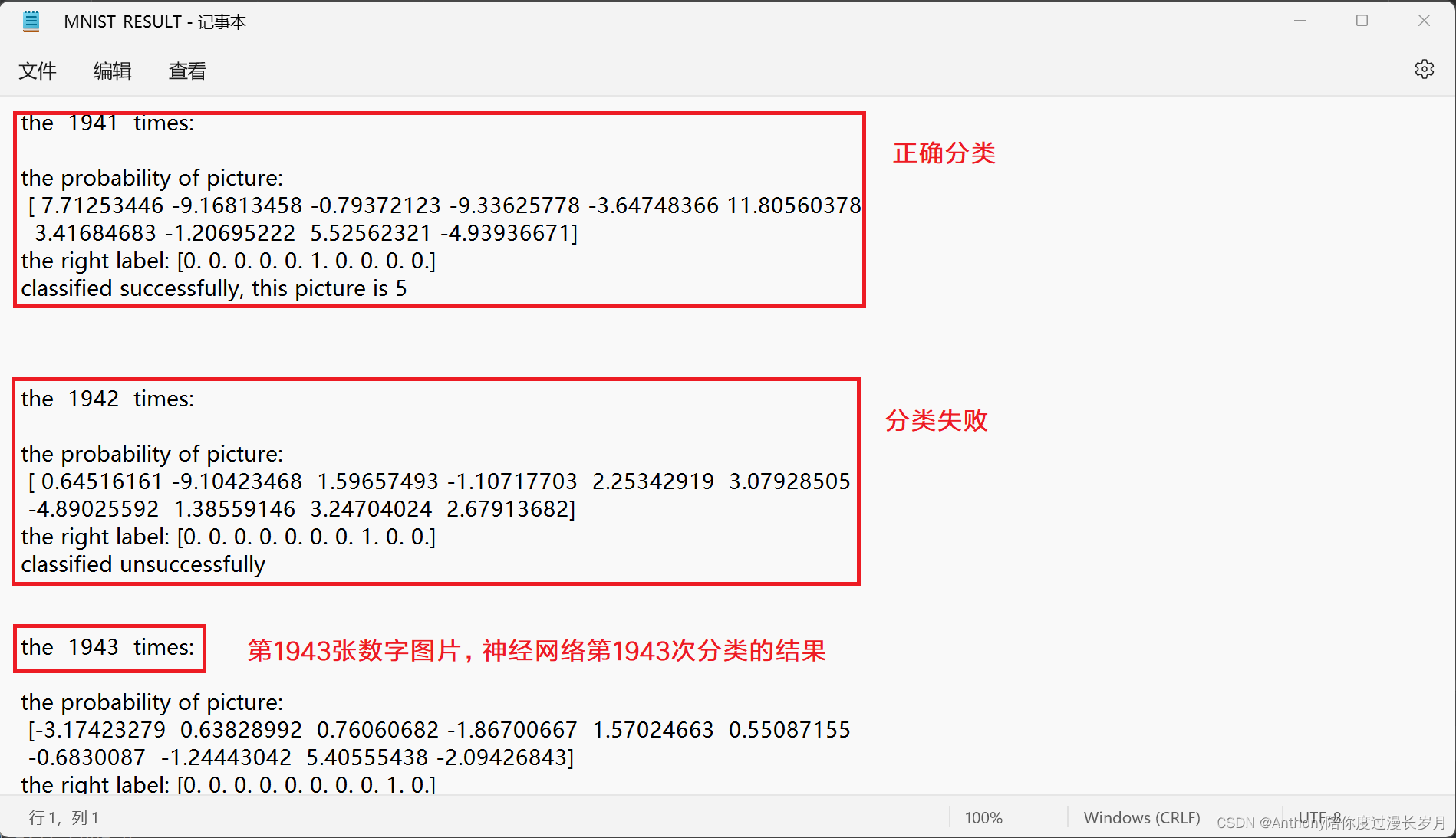
我们要将需要保存是运行结果print()中加入file=ouputfile,最后面一定的有outputfile.close(),否则都不会成功
好像这样:
print("the Accuracy:" + str(float(accuracy_cnt) / x_test.shape[0]), file=outputfile)
相比于之前的代码,这次的学习通过使用层的模块化,神经网络中可以自由地组装层,轻松构建自己喜欢的神经网络。
以下是完整代码:
import numpy as np
from collections import OrderedDict # 有序字典:记住向字典里添加元素的顺序
import sys, os
from dataset.mnist import load_mnist
sys.path.append(os.pardir)
# 数值微分
def numerical_gradient(f, x):
h = 1e-4 # 0.0001
grad = np.zeros_like(x)
it = np.nditer(x, flags=['multi_index'], op_flags=['readwrite']) # np.nditer() 迭代器处理多维数组
while not it.finished:
idx = it.multi_index
tmp_val = x[idx]
x[idx] = float(tmp_val) + h
fxh1 = f(x) # f(x+h)
x[idx] = tmp_val - h
fxh2 = f(x) # f(x-h)
grad[idx] = (fxh1 - fxh2) / (2 * h)
x[idx] = tmp_val # 还原值
it.iternext()
return grad
# 损失函数
def cross_entropy_error(y, t):
delta = 1e-7
return -1 * np.sum(t * np.log(y + delta))
# 激活函数
def softmax(x):
if x.ndim == 2:
x = x.T
x = x - np.max(x, axis=0)
y = np.exp(x) / np.sum(np.exp(x), axis=0)
return y.T
x = x - np.max(x)
return np.exp(x) / np.sum(np.exp(x))
def sigmoid(x1):
return 1 / (1 + np.exp(-x1))
# 加法层、乘法层、激活函数层、Affine层、Softmax层
class Addyer: # 加法节点
def __init__(self):
pass
def forward(self, x, y):
out = x + y
return out
def backward(self, dout):
dx = dout * 1
dy = dout * 1
return dx, dy
class Mullyer: # 乘法节点
def __init__(self): # __init__() 中会初始化实例变量
self.x = None
self.y = None
def forward(self, x, y):
self.x = y
self.y = x
out = x * y
return out
def backward(self, dout):
dx = dout * self.x
dy = dout * self.y
return dx, dy
class ReLU:
def __init__(self):
self.mask = None
def forward(self, x):
self.mask = (x <= 0)
out = x.copy()
out[self.mask] = 0
return out
def backward(self, dout):
dout[self.mask] = 0
dx = dout
return dx
class SoftmaxWithLoss:
def __init__(self):
self.loss = None
self.y = None
self.t = None
def forward(self, x, t):
self.t = t
self.y = softmax(x)
self.loss = cross_entropy_error(self.y, self.t)
return self.loss
def backward(self, dout=1):
batch_size = self.t.shape[0]
dx = (self.y - self.t) / batch_size
return dx
class Affine:
def __init__(self, w, b):
self.w = w
self.b = b
self.x = None
self.dw = None
self.db = None
def forward(self, x):
self.x = x
out = np.dot(x, self.w) + self.b
return out
def backward(self, dout):
dx = np.dot(dout, self.w.T)
self.dw = np.dot(self.x.T, dout)
self.db = np.sum(dout, axis=0)
return dx
class TwoLayerNet:
def __init__(self, input, hidden, output, weight__init__std=0.01):
# 权重的初始化 假设一个权重
self.params = {}
self.params['w1'] = weight__init__std * np.random.randn(input, hidden)
self.params['b1'] = np.zeros(hidden)
self.params['w2'] = weight__init__std * np.random.randn(hidden, output)
self.params['b2'] = np.zeros(output)
# 生成层
self.layers = OrderedDict()
self.layers['Affine1'] = Affine(self.params['w1'], self.params['b1'])
self.layers['ReLU1'] = ReLU()
self.layers['Affine2'] = Affine(self.params['w2'], self.params['b2'])
self.lastlayer = SoftmaxWithLoss()
def predict(self, x):
for layer in self.layers.values():
x = layer.forward(x)
return x
def loss(self, x, t): # x:测试数据;t:监督数据
y = self.predict(x)
return self.lastlayer.forward(y, t)
def accuracy(self, x, t):
y = self.predict(x)
y = np.argmax(y, axis=1) # 正确解标签
if t.ndim != 1:
t = np.argmax(t, axis=1)
accuracy = np.sum(y == t) / float(x.shape[0])
return accuracy
def numerical_grandient(self, x, t): # x:测试数据;t:监督数据
loss_w = lambda w: self.loss(x, t)
grads = {}
grads['w1'] = numerical_gradient(loss_w, self.params['w1'])
grads['b1'] = numerical_gradient(loss_w, self.params['b1'])
grads['w2'] = numerical_gradient(loss_w, self.params['w2'])
grads['b2'] = numerical_gradient(loss_w, self.params['b2'])
return grads
def gradient(self, x, t):
# forward
self.loss(x, t)
# backward
dout = 1
dout = self.lastlayer.backward(dout)
layers = list(self.layers.values())
layers.reverse()
# reserved() 是 Python 内置函数之一,其功能是对于给定的序列(包括列表、元组、字符串以及 range(n) 区间),该函数可以返回一个逆序序列的迭代器(用于遍历该逆序序列)
for layer in layers:
dout = layer.backward(dout)
# setting
grads = {}
grads['w1'] = self.layers['Affine1'].dw
grads['b1'] = self.layers['Affine1'].db
grads['w2'] = self.layers['Affine2'].dw
grads['b2'] = self.layers['Affine2'].db
return grads
# 输出结果保存
def Result_save(name):
path = "C:\\Users\\zzh\\Deshtop\\"
full_path = path + name + '.txt' # 也可以创建一个.doc的word文档
file = open(full_path, 'w')
return file
filename = 'MNIST_RESULT'
Result_save(filename)
output = sys.stdout
outputfile = open("C:\\Users\\zzh\\Deshtop\\" + filename + '.txt', 'w')
sys.stdout = outputfile
# 数据导入
(x_train, t_train), (x_test, t_test) = load_mnist(normalize=True, one_hot_label=True)
networks = TwoLayerNet(input=784, hidden=50, output=10)
# # 读入数据和梯度确认
# x_batch = x_train[:3] # 3 张图片 (3个数字) 因为数值微分运行很慢,取3个结果观察
# t_batch = t_train[:3]
#
# grad_numberical = networks.numerical_grandient(x_batch, t_batch) # 数值微分法
# grad_backprop = networks.gradient(x_batch, t_batch) # 误差反向传播法
#
# # 求各个权重的绝对平均值
# for key in grad_numberical.keys():
# diff = np.average(np.abs(grad_backprop[key] - grad_numberical[key]))
# print(key + ":" + str(diff))
#
# # w1:0.0008062789370314258
# # b1:0.007470903158435932
# # w2:0.007911547556927193
# # b2:0.4162550575209752
# 超参数
iters_num = 10000
train_size = x_train.shape[0] # 60000
batch_size = 100 # 批处理数量
learning_rate = 0.1
train_acc_list = []
test_acc_list = []
train_loss_list = []
iter_per_epoch = max(train_size / batch_size, 1)
print("MNIST classification", '\n', "Nerual Network is learning weight and bias", file=outputfile)
for i in range(iters_num):
batch_mask = np.random.choice(train_size, batch_size) # mini——batch 处理
x_batch = x_train[batch_mask]
t_batch = t_train[batch_mask]
grad = networks.gradient(x_batch, t_batch) # 通过误差反向传播法求梯度
# 更新权重、偏置参数
for key in ('w1', 'b1', 'w2', 'b2'):
networks.params[key] -= learning_rate * grad[key]
loss = networks.loss(x_batch, t_batch)
train_loss_list.append(loss)
# 每个epoch的识别精度 输出的是总的正确率 而不是一个数据(图片)的概率
if i % iter_per_epoch == 0:
train_acc = networks.accuracy(x_train, t_train)
test_acc = networks.accuracy(x_test, t_test)
train_acc_list.append(train_acc)
test_acc_list.append(test_acc)
print("train acc, test acc |" + str(train_acc) + ",", str(test_acc), file=outputfile)
# 输出的概率 利用更新好的参数去推理
print("the shape of weight and bias:", '\n', file=outputfile)
print(networks.params['w1'].shape, file=outputfile) # (784, 50)
print(networks.params['b1'].shape, file=outputfile) # (50,)
print(networks.params['w2'].shape, file=outputfile) # (50, 10)
print(networks.params['b2'].shape, file=outputfile) # (10,)
accuracy_cnt = 0
for i in range(x_test.shape[0]):
y = networks.predict(x_test[i])
print("the ", i + 1, " times:", '\n', file=outputfile)
print("the probability of picture:", '\n', y, file=outputfile)
print("the right label:", '\n', t_test[i], file=outputfile)
result = np.argmax(y)
answer = np.argmax(t_test[i])
if result == answer:
print("classified successfully, this picture is", result, '\n', file=outputfile)
accuracy_cnt += 1
else:
print("classified unsuccessfully", file=outputfile)
print('\n', file=outputfile)
print("the Accuracy:" + str(float(accuracy_cnt) / x_test.shape[0]), file=outputfile)
outputfile.close()
MINIST数据导入的代码:
# coding: utf-8
try:
import urllib.request
except ImportError:
raise ImportError('You should use Python 3.x')
import os.path
import gzip
import pickle
import os
import numpy as np
url_base = 'http://yann.lecun.com/exdb/mnist/'
key_file = {
'train_img': 'train-images-idx3-ubyte.gz',
'train_label': 'train-labels-idx1-ubyte.gz',
'test_img': 't10k-images-idx3-ubyte.gz',
'test_label': 't10k-labels-idx1-ubyte.gz'
}
dataset_dir = os.path.dirname(os.path.abspath(__file__))
save_file = dataset_dir + "/mnist.pkl"
train_num = 60000
test_num = 10000
img_dim = (1, 28, 28)
img_size = 784
def _download(file_name):
file_path = dataset_dir + "/" + file_name
if os.path.exists(file_path):
return
print("Downloading " + file_name + " ... ")
urllib.request.urlretrieve(url_base + file_name, file_path)
print("Done")
def download_mnist():
for v in key_file.values():
_download(v)
def _load_label(file_name):
file_path = dataset_dir + "/" + file_name
print("Converting " + file_name + " to NumPy Array ...")
with gzip.open(file_path, 'rb') as f:
labels = np.frombuffer(f.read(), np.uint8, offset=8)
print("Done")
return labels
def _load_img(file_name):
file_path = dataset_dir + "/" + file_name
print("Converting " + file_name + " to NumPy Array ...")
with gzip.open(file_path, 'rb') as f:
data = np.frombuffer(f.read(), np.uint8, offset=16)
data = data.reshape(-1, img_size)
print("Done")
return data
def _convert_numpy():
dataset = {}
dataset['train_img'] = _load_img(key_file['train_img'])
dataset['train_label'] = _load_label(key_file['train_label'])
dataset['test_img'] = _load_img(key_file['test_img'])
dataset['test_label'] = _load_label(key_file['test_label'])
return dataset
def init_mnist():
download_mnist()
dataset = _convert_numpy()
print("Creating pickle file ...")
with open(save_file, 'wb') as f:
pickle.dump(dataset, f, -1)
print("Done!")
def _change_one_hot_label(X):
T = np.zeros((X.size, 10))
for idx, row in enumerate(T):
row[X[idx]] = 1
return T
def load_mnist(normalize=True, flatten=True, one_hot_label=False):
"""读入MNIST数据集
Parameters
----------
normalize : 将图像的像素值正规化为0.0~1.0
one_hot_label :
one_hot_label为True的情况下,标签作为one-hot数组返回
one-hot数组是指[0,0,1,0,0,0,0,0,0,0]这样的数组
flatten : 是否将图像展开为一维数组
Returns
-------
(训练图像, 训练标签), (测试图像, 测试标签)
"""
if not os.path.exists(save_file):
init_mnist()
with open(save_file, 'rb') as f:
dataset = pickle.load(f)
if normalize:
for key in ('train_img', 'test_img'):
dataset[key] = dataset[key].astype(np.float32)
dataset[key] /= 255.0
if one_hot_label:
dataset['train_label'] = _change_one_hot_label(dataset['train_label'])
dataset['test_label'] = _change_one_hot_label(dataset['test_label'])
if not flatten:
for key in ('train_img', 'test_img'):
dataset[key] = dataset[key].reshape(-1, 1, 28, 28)
return (dataset['train_img'], dataset['train_label']), (dataset['test_img'], dataset['test_label'])
if __name__ == '__main__':
init_mnist()
